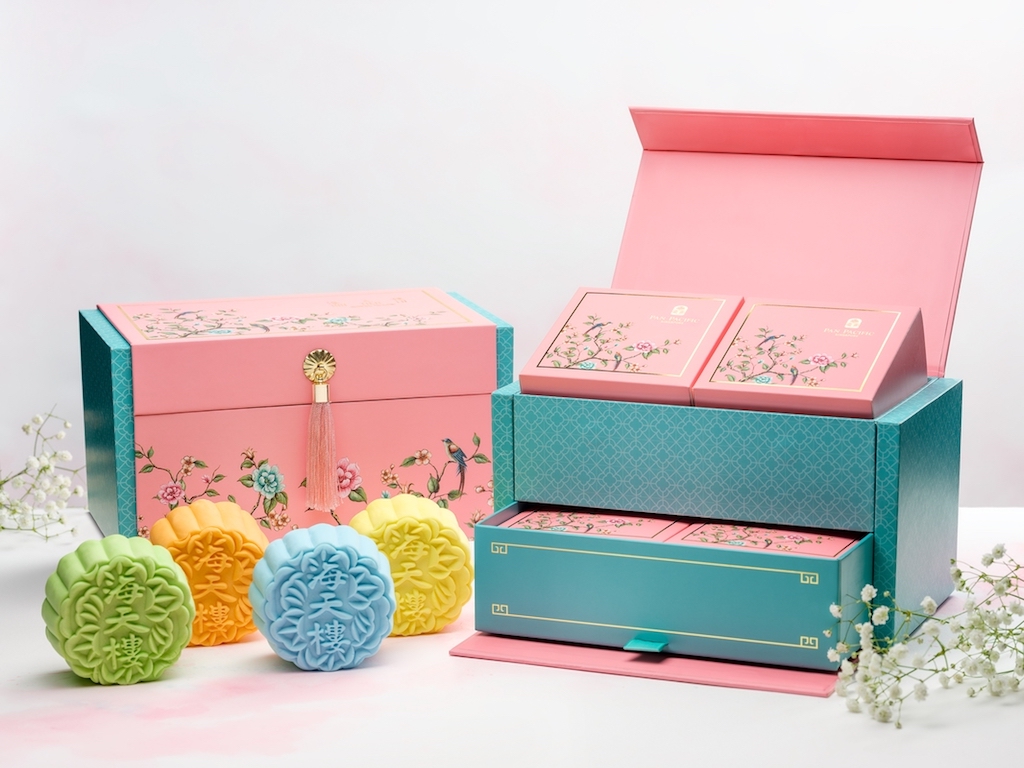4 Mins Read
Mid-Autumn Festival is one of the most important holidays of the Chinese calendar, and at the center of this special time is the gifting of the mooncake. In Chinese culture, mooncakes are enjoyed between families and friends, and presented to relatives and business associates with good wishes as a token of love and respect. The traditional version typically contains lotus seed paste or sweet red bean filling and a salted egg yolk middle all encased in a tender pastry skin. Modern interpretations veer from durian ice cream mooncake to “lava custard” and even a whole range of plant-based and healthy versions. But one thing that doesn’t get talked about enough is how wasteful the tradition is: believe it or not, mooncakes generate obscene amounts of food waste.
Because, Tradition
A celebration at the end of the Autumn harvest, Mid-Autumn Festival is typically observed in Chinese communities from Taiwan to Vietnam, to Malaysia, with large city-wide celebrations in Hong Kong and Singapore. The practice of mooncake eating is ingrained within the annual celebration, which itself is intricately linked to the Chinese legend of Chang E, the mythical Moon Goddess of Immortality. While we can all appreciate the timeless history and story behind this fall tradition, Mid-Autumn for many now represents a season where a huge number of extravagantly packaged mooncakes are continually gifted and received between families, friends, relatives and co-workers, generating huge amounts of waste. It’s hard not to participate in mooncake gifting as family members and companies try to one-up each with who gave the fanciest, most elaborately packaged mooncake. In fact, mooncake packaging can be considered a competitive sport (Pinterest is filled with boards dedicated to this).
An Obscene Quantity Of Food Waste
Here’s an unspoken secret: many people may not actually like mooncakes. This is evidenced by the huge amount of them that end up in the trash. According to local charity Food Grace, Hong Kong households ended up with 2.9 million leftover mooncakes in 2018, an increase of 630,000 from the previous year. Speaking to The Standard, project officer from Food Grace Casey Ng said: “The problem of mooncake waste is very serious in Hong Kong.”
You might think that these unopened, uneaten mooncakes could be matched with people in need, but alas. The charity group’s survey found that on average, only one-third of families donated unopened mooncakes. This means that almost 2 million mooncakes were ended up in landfills last year. Considering that over 1 million Hong Kongers struggle to afford nutritious meals, according to the food rescue organisation Feeding Hong Kong, the mooncake wastage is a tragedy.
Oh, The (Packaging) Excess
In addition to the food waste they produce, mooncakes are often elaborately packaged -think inserts, trays, individual wrapping, boxes and gift bags, all for 4 tiny cakes. According to Singapore’s Environmental Council, over 40% of mooncake packaging is considered unnecessary. The packaging, which is usually made from glossy virgin-tree paper layered with shiny plastic film, tends to be un-recyclable, contributing heavily to Hong Kong’s mounting landfill crisis. With brands looking to up the ante every year, we are now seeing fold-out paper huts and built-in lantern lights- again, none of this is recyclable or compostable. While some of the mooncake packaging is beautiful, it is also excessive, extremely wasteful and in these apocalyptic climate times, downright irresponsible.
Glowsticks: Why, Just Why
To add to the wastefulness of the Mid-Autumn holiday, many will celebrate the festival by going out to enjoy the full moon with glow sticks (traditionally families used lanterns with candles). According to the environmental body Green Power, around a third of Hong Kong families will buy single-use glow sticks instead of lanterns. Shockingly, an estimated 40 million sticks end up in our landfills annually. Not only is this hugely wasteful, it’s also worrying. Glowsticks contain a range of chemicals in their liquid solution and some can be harmful to waterways, pets, and even humans. The Steve Spangler Science blog offers an overview of all the substances and their potential risks.
A Greener Mid-Autumn
So this year, celebrate away – but do it the sustainable way! Gift red packets, enjoy a meal with family, offer (plastic-free) fruit baskets, ditch the glow sticks, make homemade cakes that don’t require elaborate packaging, make paper lanterns from upcycled paper and then recycle them- after all, what matters most is commemorating Mid-Autumn by spending time with loved ones, so let’s be kind to the planet while we’re at it. And if you love mooncakes, which we totally get, buy them packaging-free from bakeries and only buy as many as you will finish!
Lead image courtesy of Peak Magazine.




